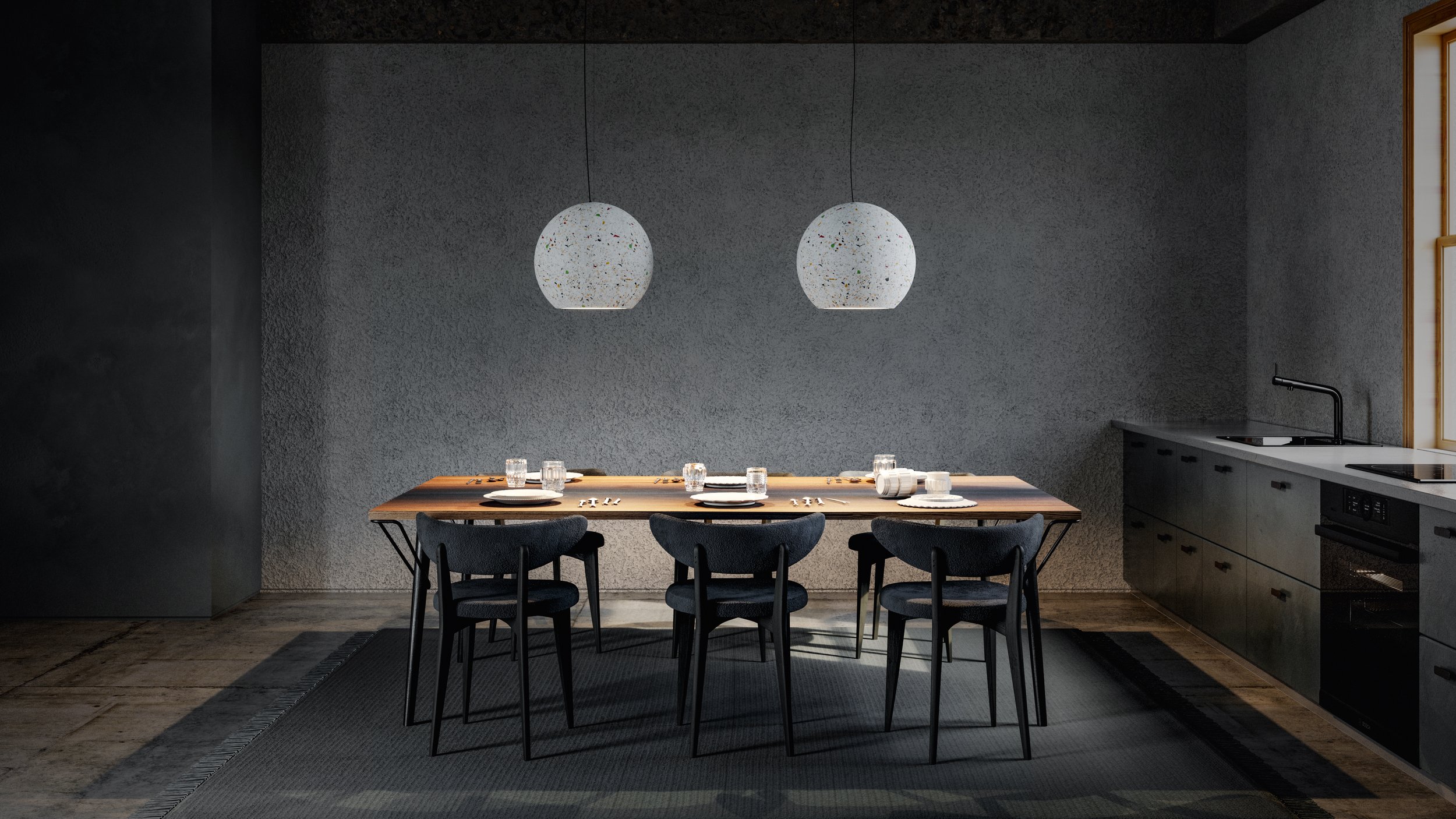
oeuvre by gry space x jona sees of eyn vas
At once functional and sculptural, the piece exists as a singular mass when not in use, blurring the boundary between object and architecture.
The installation is anchored by a 16-foot-long dining table accompanied by 14 chairs, all conceived as part of one continuous gesture. When the chairs are drawn in, the work reads as a black, monolithic slab: quiet, still, and immovable. When in use, the piece expands into a functional gathering site, offering space, structure, and proportion with deliberate restraint. Subtle slits and connection points allow natural light to pass through, creating moments of shadowplay and atmospheric depth.
Minimal yet monumental, the installation holds visual and emotional weight, serving not only as the heart of the home, but as an intentional pause in the flow of domestic life.
Its placement and angularity respond directly to the structural cues of the home itself. The table's form originated from a chalked outline on the concrete flooring, angled just slightly to accommodate the path of a nearby stairwell and to echo the existing architectural lines. The designers leaned into these asymmetries, working with the home's patchwork of surfaces and shifting geometries to create a piece that feels native to its setting.
"The table shifts with presence, serving as a gathering space when in use, then receding into stillness when the chairs are drawn in," shares the duo. "It becomes part of the architecture itself."
The concept of the "intentional pause" emerges as a central theme: a moment where the piece is not in active use, but fully present nonetheless. Still, silent, and whole, it becomes a site of reflection rather than action. With its long lines and weighted massing, oeuvre doesn't command attention; it invites awareness. Even in its static state, it is animated by tension between light and shadow, between movement and stillness, between presence and absence.
Materiality plays a key role in shaping the piece's identity. The deep black finish emphasizes its gravity within the home, a nod to the client's reverence for dining as a ritual, not just a routine. Here, the dining room is redefined, not as a casual zone, but as a deliberate center of gathering, anchoring daily life around communion and connection.
The technical challenges of the project were as sculptural as they were structural.
Ensuring the nested components aligned seamlessly without disrupting the overall monolithic reading required both material precision and conceptual clarity. Every edge, void and seam was finely calibrated, allowing the transformation between states to feel natural, almost imperceptible. Function had to coexist with form in a way that felt inevitable, not added-on.
Though grounded in the architectural language of the home, oeuvre is also shaped by the designers' ongoing creative dialogue, one that spans disciplines and dissolves boundaries. The work is not a departure, but a distillation: a shared language of form, weight, and presence, honed through years of collaboration.
Rather than being just a table, oeuvre is an event of sorts, a materialized idea. It is a piece that asks to be noticed in silence, and felt in stillness. A void that holds weight. A gesture that remains, long after the meal has ended.
Related Content
Lodes and Diesel Living unveil their latest collaboration - four lighting products: Magic Mushroom, Reglobe, Spring, and U.F.O. These pieces redefine industrial and minimalist aesthetics, showcasing the ingenuity and visual appeal of modern industrial design.
Lodes is launching its first collaboration with Ron Arad, the internationally renowned artist, architect and designer, known for his iconic industrial pieces that have won multiple awards and been exhibited in the world’s most prestigious institutions.
Lodes has renewed its collaboration with Norwegian architecture and design studio, Snøhetta, to expand the Volum collection.


















